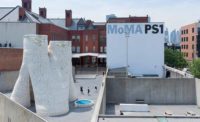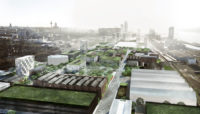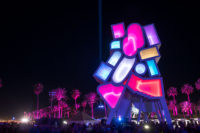This past weekend marked the opening of the second Chicago Architecture Biennial (CAB), making it, officially, a biennial. With the theme “Make New History,” CAB—the largest architecture and design exhibition in North America—looks both to architecture’s past and to what’s next. “The whole city is a canvas for a discussion to inform, influence, and imagine what the future will be,” said Chicago mayor Rahm Emanuel at a press conference to kick off the months-long event.
In fact, much of the Biennial takes place within the Chicago Cultural Center, a labyrinthine former library building built in 1897. Artistic directors Sharon Johnston and Mark Lee of the Los Angeles-based firm Johnston Marklee, who drew the title for this year’s edition from a work by artist Ed Ruscha, selected over 140 participants—architects as well as photographers, musicians, and performance artists—to consider the importance of historical material to their practice.
This takes on many different forms. Paris-based LAN, together with architect-engineer Franck Boutté, in a project first produced by Paris’ Pavillon de l’Arsenal, explore the Haussmann urban system through the lens of the social and environmental challenges that our cities face in the present day. Photographer Filip Dujardin displays realistic collages of Chicago buildings of various types that look like structures that have actually been built. In perhaps the highlight of the show, called Vertical City, 16 architects including former RECORD Vanguards Go Hasegawa, Kuehn Malvezzi, Barozzi Veiga, Tatiana Bilbao, and Office Kersten Geers David van Severen, reconsider the 1922 brief for the design of a tower to house the Chicago Tribune newspaper company. Each model for a new tower is 16 feet high, creating a kind of hypostyle hall on the top floor of the Cultural Center.
In one of the off-site exhibits, Francois Perrin, in response to an era of climate change, population growth, and political uncertainty, suspends his Air Houses in the canopy of the Palm House at the Garfield Park Conservatory to demonstrate a lighter, more flexible approach to building structures.
CAB’s programming includes performances, talks, forums, film screenings—even bus tours to architecturally significant buildings including Frank Lloyd Wright’s Johnson Wax Headquarters in Racine, Wisconsin—that will take place throughout the duration of the Biennial, which runs through January 7, 2018.











Post a comment to this article
Report Abusive Comment